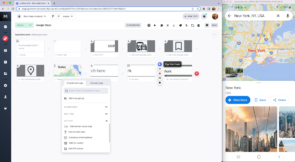Smartphones have been a part of our lives for 17 years now! Since the first iPhone’s debut in 2007, the underlying technology of smartphones has transformed, with each generation heralding faster chips and more sophisticated sensors. In 2023, more than 1 billion devices were sold worldwide, and if the number of brands and form factors seem overwhelming, consider what users are running on this sea of devices. The app market is booming—Statista reports mobile app revenues exceeded $400 billion in 2022 and will surpass $600 billion by 2027.
Smartphones, tablets, and other smart gadgets are central to our daily routines, assisting us with online banking, booking travel, capturing memorable moments, and connecting with loved ones. For many, these gadgets are more companions than tools, commanding hours of attention daily and storing sensitive data. This raises the stakes of mobile development, since expectations surrounding app performance are sky-high. If an app feels sluggish and unresponsive or crashes too frequently, users won’t hesitate to explore alternatives in just a few taps. That’s why it’s crucial for dev teams to invest in enhancing user experience and product quality to delight users.
Let’s jump into four best testing practices in mobile testing that can elevate the quality of your mobile apps.
Know your customers
Understanding your audience is the bedrock of successful testing practices. Before testing, you’ll want to gather insights on your users—
- Who are they?
- What’s their age group?
- Which devices do they prefer?
- What other apps do they use?
- How do they use their devices?
This data, typically collected by product managers or marketing specialists, lays the groundwork for your testing approach. If you’re launching a new app, consider market research or competitor analysis to fill in these blanks. Then, armed with this knowledge, tailor your testing efforts to the devices and scenarios most relevant to your users.
Focus on mobile device groups
Customer data narrows the testing scope to specific use cases and device types. Since it’s impractical to test on every available device, you’ll want to zero in on the devices most popular with your users. Create device groups based on hardware and software specifications, then prioritize to streamline your testing process.
Once you have line of sight on common devices used by your customers, decide which devices you want to buy for real device testing, which devices you can cover with a cloud provider, and which automated tests you can execute on emulators or simulators.
The sheer count of devices can be overwhelming, so here are some examples of mobile device groups to manage the sprawl. Let’s create three device groups based on hardware and software specifications, mix of different mobile platforms and vendors. We’ll assign each group a priority: “A” is high, “B” is medium, and “C” is the lowest priority.
- Group 1, priority C: small devices with a small CPU, RAM, and low resolution. Older software versions and older browsers.
- Group 2, priority B: mid-range devices with an avg. CPU, RAM (<1024 MB), good screen size and resolution. Older software versions
- Group 3, priority A: High-end devices with a dual- and quad-core CPUs, RAM >1024 MB, and a high resolution. Latest software versions.
Now you can add real devices to each group–10 to 15 devices recommended per group. In each test cycle, pick three to four devices from each group and test the latest product features. With this approach, you will downsize the amount of effort required during development and testing phases, while at the same time maintaining device coverage.
Test against mobile-specific use cases
Mobile apps are unique, since their usage patterns differ from desktop or web apps. Factors like varying network speeds and offline use cases call for a focused testing strategy that addresses these scenarios. Here are some mobile-specific use cases to check:
- Test hardware sensors such as the ambient light sensor, proximity sensor, acceleration sensor, gyroscope sensor, or the location sensor
- Test how your app handles standby mode
- Test how your app can handle interruptions or battery issues
- Check how your app displays supported languages
💡 Check out my mobile testing best practices cheat sheet for some more examples I created for the testing community.
Don’t forget about the “normal” software testing tasks you’ll want to run alongside these mobile-specific use cases, like verifying functional and non-functional requirements are implemented correctly.
Combine mobile testing tools
If you and your team have performed all the manual testing needed for your mobile app, consider automating repetitive tests to reduce your manual testing burden, but keep in mind that relying solely on UI automation tools is a common pitfall, since mobile apps interact with backends and APIs—your testing should account for those layers, too. Pick tools that test across the technology stack, from unit and integration tests for backend services to API testing frameworks and UI automation, for a comprehensive approach.
This calls for analyzing which tools are best suited to each part of the tech stack–and how they can speed up development. In most cases, many of the automated regression testing can be done on the backend with unit and integration tests. These tests are faster to implement and deliver great feedback. The next layer of automation tools can be API testing frameworks. These frameworks will check the different request and response calls if they work correctly. Finally, you can add a third tool to verify the UI of the mobile app, like Testim, to automate your mobile frontend, focusing on critical user journeys.
Before you implement a new UI test, consider if the same logic or feature can be tested on a different layer. This will help you and your team to establish a stable mobile test automation suite.
There’s more to cover
These testing best practices are just the beginning to your testing journey. If you unlock more time in your release cycle, focus on non-functional testing. Your customers will appreciate a responsive app with snappy performance, so usability testing, performance testing, and security testing are also important to keep in mind to ensure your team delivers a fantastic mobile experience for your customers.




